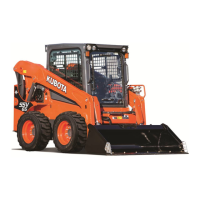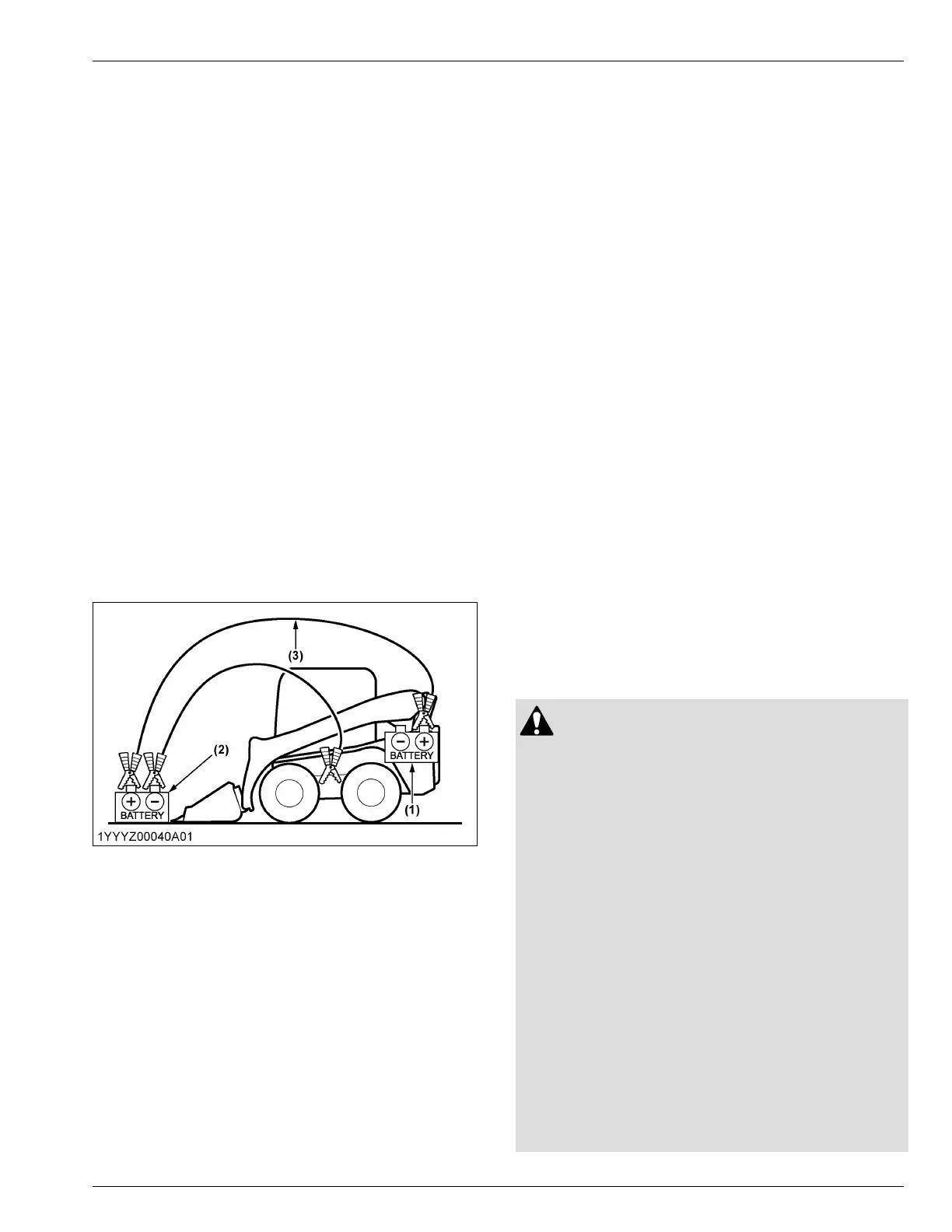1. Bring the helping machine with the same battery
voltage as near as possible to the machine.
IMPORTANT :
• The machines must not come in contact with
each other.
2. Bring the levers and pedal of both machines in the
neutral position.
3. Wear eye protection and rubber gloves.
4. Make sure that the vent caps are securely in place
if equipped.
5. Connect the terminal of the red jumper cable with
the plus (+) terminal of the low battery and connect
the other end of the red cable to the plus (+)
terminal of the auxiliary battery.
6. Connect the black negative cable to the minus (-)
terminal of the auxiliary battery.
7. Connect the other end of the black cable coming
from the auxiliary battery to the conductive part of
the machine frame as far away as possible from the
low battery.
8. Start the engine of the helping machine and let it
run for a while.
9. Start the machine with the low battery.
10. Disconnect the jumper cables in the reverse
sequence.
(1) Low battery
(2) Auxiliary battery
(3) Jumper cables
IMPORTANT :
• This machine is equipped with a negative (-)
ground 12 Volt starting system.
• Only use the same voltage when using an
auxiliary battery.
• Using a higher voltage will cause serious
damage to the electrical system. When using
an auxiliary battery, only the compatible
(same) voltage is permissible.
OPERATION OF THE MACHINE
1. Running-in of the machine
It is most important to run-in your machine properly in
order to achieve its full performance and longevity.
The operation and care of the new machine influence
its life span. Your new machine has been carefully
checked and tested before leaving the factory. In spite
of careful check and test, all movable components must
be run-in during the first 50 work hours. Do not work
with full rpm and full loads during the first 50 work
hours.
During the running-in period, adhere to the following
points in all cases.
Do not work with full engine rpm or full loads
during the first 50 working hours
• Let the engine warm up sufficiently in the cold
season.
• Do not let the engine rev-up more than necessary.
Oil change in the run-in stage
The lubrication oil plays a specific and important role
during the run-in phase of the machine.
The numerous movable parts are not yet run-in, so
many fine metal particles can be generated and may
cause damage and shorten the life of many
components.
Pay attention to the oil-change intervals and complete
them sooner than later.
See Changing the engine oil on page 96 for more
details on the oil-change intervals.
2. Start of the machine
WARNING
To avoid personal injury or death:
• Mount the machine and dismount the machine
only at locations that have steps and/or
handholds.
Before you mount the machine, clean the steps
and the handholds.
• Start the machine only from the operator's seat.
Never short across the starter terminals or
across the batteries.
Shorting could damage the electrical system by
bypassing the engine-neutral-start-system.
• Inspect the condition of the seat belt and the
mounting hardware.
Replace any parts that are worn or damaged.
Do not use a seat belt extension on a
retractable seat belt.
• Adjust the seat so that full pedal travel can be
achieved with the operator's body against back
of the seat.
• Make sure that the machine is equipped with a
lighting system that is adequate for the job
conditions.
OPERATION OF THE MACHINE OPERATION

